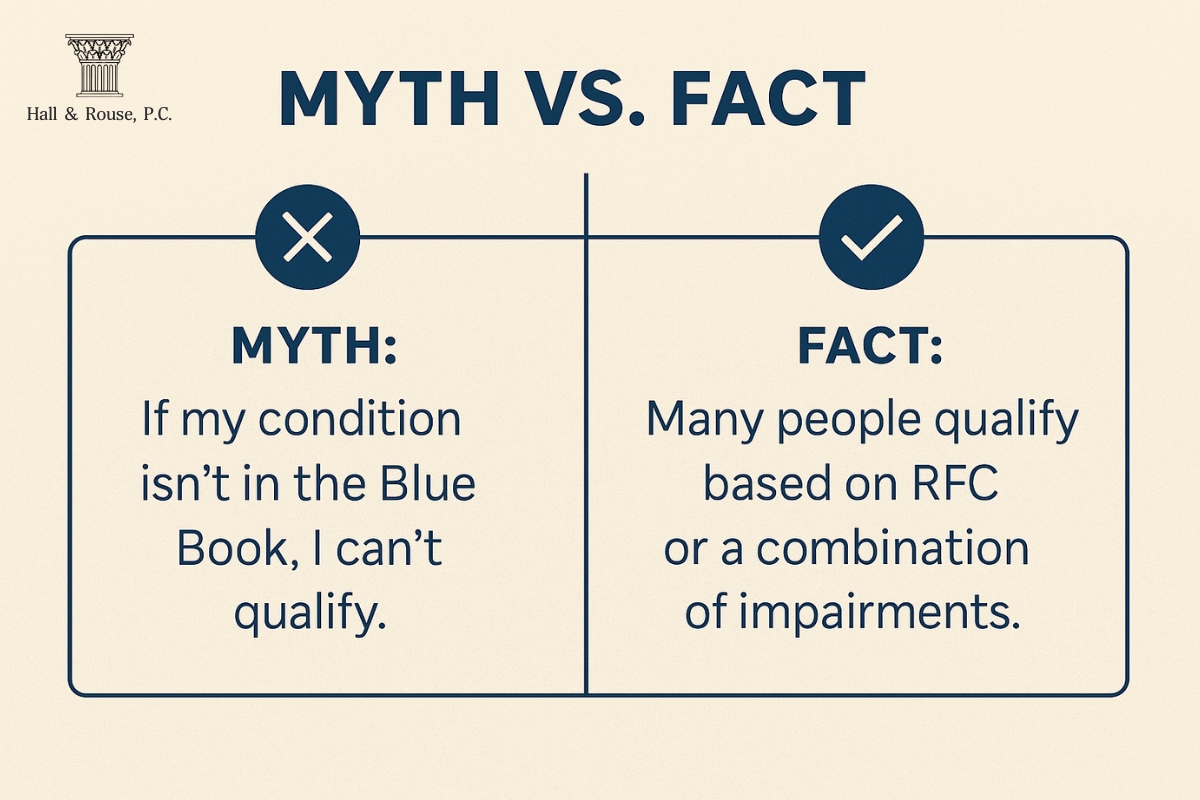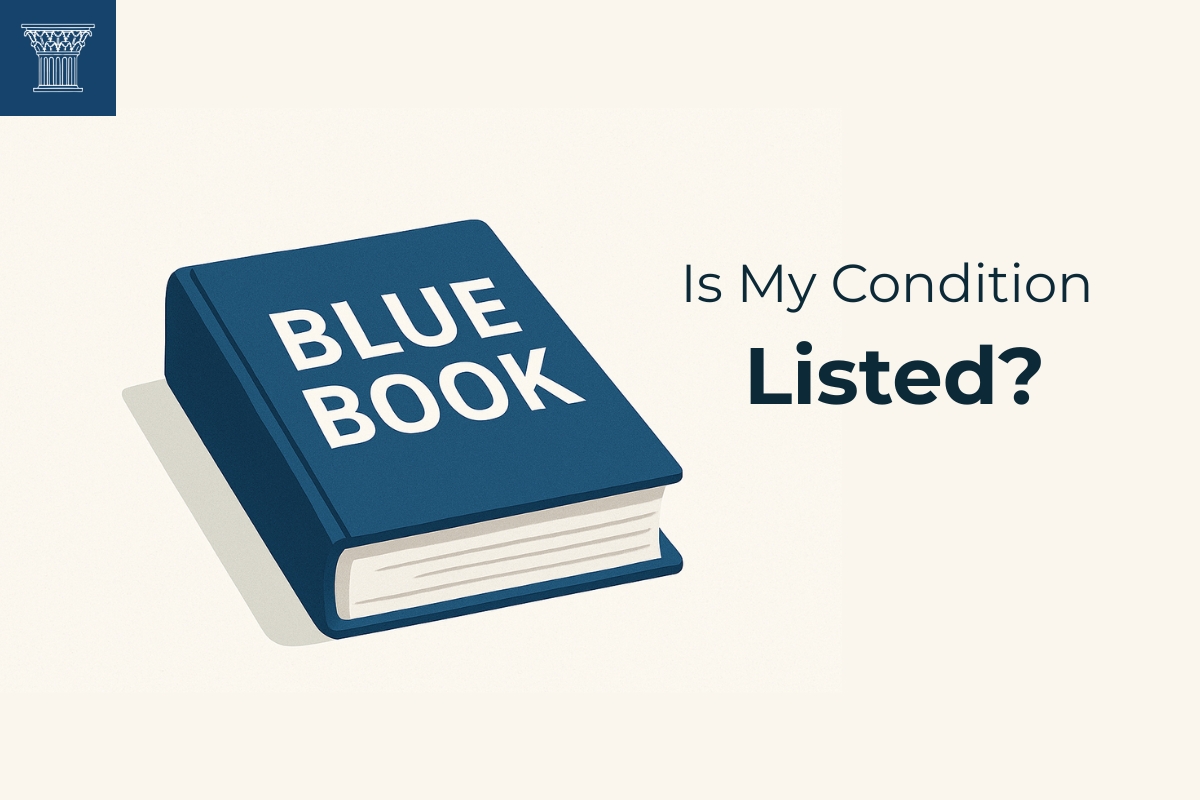You’ve been through test after test. You’ve told your story a hundred times — to doctors, to caseworkers, to friends who try to understand. You know you can’t work like you used to. And now, you’re finally taking the step to apply for Social Security Disability benefits.
But as you begin your research, something called “The Blue Book” keeps popping up. It sounds official… maybe even hopeful. So you look it up — only to find a wall of government language, strange medical terms, and technical descriptions that seem written for someone else.
What is this thing? Are you supposed to be in it? And what happens if you’re not?
The truth is, the Blue Book isn’t a secret code you’re expected to crack on your own — but it is an important part of your disability journey. Understanding how it works helps you better prepare your case or get the right help.
What Is the Blue Book and Who Uses It?
Think of the Blue Book as the SSA’s rulebook. It outlines which medical conditions qualify for disability and the severity level required for approval.
The Social Security Administration wrote this book for disability examiners, SSA doctors, and judges — not for claimants. That’s why it reads more like a medical manual than a helpful guide.
Officially titled “Disability Evaluation Under Social Security,” the Blue Book includes two parts:
- Part A: Adults
- Part B: Children
Each section is organized by body system. For example:
- Musculoskeletal Disorders
- Cardiovascular System
- Mental Disorders
- Neurological Conditions
Within each category, SSA lists specific impairments with detailed criteria. If your condition meets or medically “equals” those criteria, SSA considers you disabled by their rules.
Here’s the good news: You don’t need to memorize the Blue Book. You don’t even need to see your exact diagnosis in it to qualify. But knowing how it works can take away some of the confusion — and fear.
What Does It Mean to “Meet” or “Equal” a Listing?
This is where many people start to feel unsure.
Having a diagnosis like lupus, PTSD, or degenerative disc disease doesn’t automatically qualify you. SSA needs to know how severe your condition is and whether it prevents you from working consistently.
The Blue Book outlines strict criteria — almost like a recipe. If your symptoms, test results, and complications match that recipe exactly, you “meet the listing.”
However, very few people check every box.
Maybe your symptoms are just as disabling but appear differently. Maybe your condition involves multiple diagnoses. In that case, SSA considers whether your symptoms are severe enough to “equal” a listed condition.
How to Know if You Meet or Equal a Listing
- Look up your condition in the SSA Blue Book
- Review the criteria slowly and compare it to your medical records
- Ask your doctor whether your limitations align with what’s described
If the match isn’t perfect, don’t give up. You may still qualify based on how your condition limits your ability to work. That’s where RFC comes in.
Finding and Navigating the Blue Book
The Blue Book is available online at ssa.gov. Most adult applicants should use Part A – Adult Listings.
The structure is straightforward:
- Conditions are grouped by system (e.g., musculoskeletal, mental, neurological)
- Each listing explains the impairment, required symptoms, and acceptable evidence
How to Make Sense of It
The language can feel clinical. Terms like “marked limitation” or “disorganization of motor function” aren’t easy to digest.
What matters most is how your condition affects daily functioning — walking, concentrating, remembering, or interacting with others.
What If Your Condition Isn’t Listed by Name?
- Fibromyalgia: Not listed directly; often evaluated under Immune System Disorders or via RFC.
- Migraines: Not named as a listing, but may be evaluated under Neurological Disorders (like epilepsy).
Don’t panic if your condition isn’t listed. SSA uses more than just the Blue Book to evaluate claims.
What If Your Condition Isn’t Listed?
A missing diagnosis in the Blue Book doesn’t disqualify you.
SSA also reviews your Residual Functional Capacity (RFC). RFC measures what you can and can’t do, even with treatment.
What SSA Looks For in RFC
- Can you sit, stand, or walk for long periods?
- Can you lift, carry, or use your hands effectively?
- Can you focus, remember tasks, or manage stress?
Your medical records, daily activity logs, and doctor’s input all contribute to your RFC assessment.
What You Can Do
- Be honest with your doctor about limitations
- Keep a symptom journal
- Request an RFC form or letter from your provider
- Get legal help if your condition is difficult to document
RFC-based approvals are common. Many people qualify by proving their condition prevents consistent, full-time work — even if the name of the diagnosis isn’t in the Blue Book.

How a Lawyer Can Help
The Blue Book can be confusing. That’s why many applicants work with a disability attorney who knows how to build a strong case.
What Attorneys Do
- Compare your medical records with SSA listings
- Identify areas where your case “equals” a listing
- Build RFC arguments using your treatment history and limitations
- Prepare for your hearing and cross-examine SSA witnesses
Documentation Is Key
A lawyer ensures your medical evidence highlights the right details. They know what SSA looks for — and how to present it in the most compelling way.
Cost
You don’t pay upfront. Most attorneys work on contingency and only get paid if you win.
You’re More Than a Diagnosis
The Blue Book might look like a technical rulebook, but it’s not the whole story.
Maybe your condition is listed. Maybe it isn’t. Either way, your case depends on how your symptoms limit your ability to work. If your medical evidence supports that, you can still qualify.
You don’t have to go through this alone.
Ready to take the next step?
- Look up your condition in the Blue Book
- Talk to your doctor about how it limits you
- Reach out for help building your case
If you are in North Carolina and need help with your Social Security Disability claim, contact Hall & Rouse, P.C. today. Let’s talk about your condition, your records, and what comes next. Call us at 1-866-425-5347.


